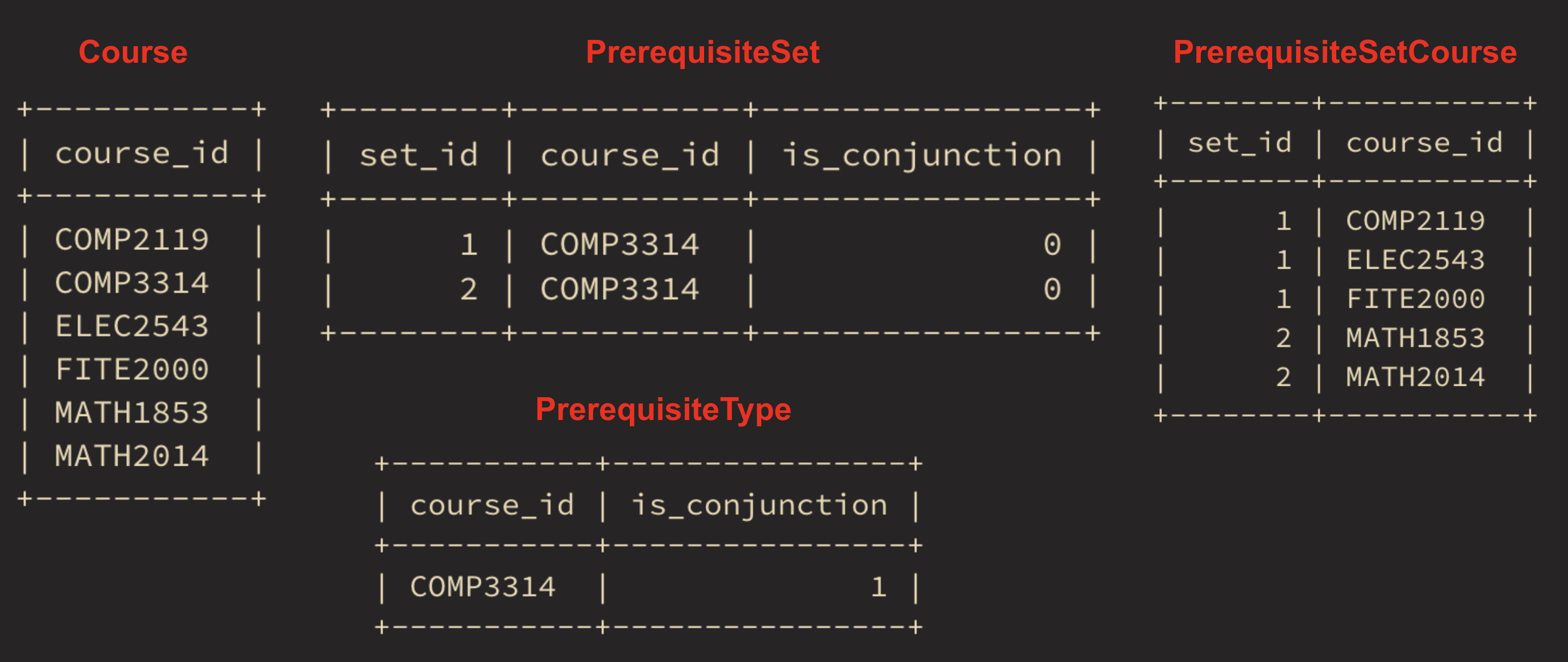- Introduction
- Simple pre-requisites
- Modeling more complicated pre-requisites
- Application in the project
Introduction
As the competitiveness of our service is highly relevant to the objective and detailed information of a course, we wanted to also show the course prerequisites to users. A prerequisite course refers to a course that a student must have taken before taking a specific course. For example, course A might require candidates to pass in course B and course C in prior.
At first, I thought it would be a pretty simple task. However, my school, probably similar for most other schools, has slightly more complicated prerequisites.
Let’s look at the Machine Learning course offered by HKU.
As you can see, this course has some pre-requisites but it’s a combination of courses connected with AND and OR.
Simple prerequisites
If the prequisites were just a list of courses connected with a single AND or OR, we can just model it as a multi-valued attribute by creating another table called CoursePrerequisite. Then, this table contains two columns: course_id and prereq_course_id, both referencing Course table and are also primary keys.
Modeling more complicated prerequisites
However, how to deal with composite prerequisites like below examples?
Prereq(C) = (A and B) or (C and D)
Prereq(C) = (A and B) or (C or D)
Prereq(C) = (A or B) and (C and D and E)
The first example means course C requires students to take “both A and B” or “both C and D” in prior.
Consider each parenthesis as a set consisting of a number of courses like (A and B) or (C or D or E). And let’s assume that each parenthesis consists of courses connected with one of AND and OR.
Then, each prerequisite is now a combination of sets rather than courses.
Suppose our goal is to store the following prerequisite.
Prerequisite of COMP3314 is
(COMP2119 or ELEC2542 or FITE2010) and (MATH1853 or MATH2014).
We can model the above by creating a few more tables called PrerequisiteSet, PrerequisiteSetCourse, and PrerequisiteType.
Course table contains course_id.
PrerequisiteSet table contains set_id, course_id, and is_conjunction. set_id column refers to each set in the prerequisite such as (COMP2119 or ELEC2542 or FITE2010) and (MATH1853 or MATH2014). Of course, we need to include course_id to make sure which course those sets belong to. Also, is_conjunction field refers to whether the courses are connected by conjunctions(AND) or disjunctions(OR).
PrerequisiteSetCourse table contains set_id and course_id. This table further specifies actual courses that belong to a specific set. For example,COMP2119, ELEC2543, and FITE2000 belong to the same set (set_id=1) as we just saw.
Lastly, PrerequisiteType table contains course_id and is_conjunction. This table defines whether the combination of sets is connected through conjunctions or disjunctions. In our example, they’re connected by AND.
Now, when we want to retrieve prerequisite for all the courses, we can join PrerequisiteSet and PrerequisiteSetCourse on course_id and group by course_id, is_conjunction, and set_id.
Application in the project
In our project, backend API returns the prerequisite in a string format like (COMP2119 or ELEC2542 or FITE2010) and (MATH1853 or MATH2014). Let’s look at SQL code to implement it.
1
2
3
4
5
6
7
8
9
10
11
12
13
14
15
16
SELECT REPLACE(
GROUP_CONCAT(temp.chunk SEPARATOR '-'),
'-',
IF(PT.is_conjunction=true, ' AND ', ' OR ')
) AS 'prerequisite' FROM (
SELECT PS.course_id,
concat(
'(',
REPLACE(GROUP_CONCAT(PSC.course_id SEPARATOR '-'), '-', If(PS.is_conjunction=true, ' AND ', ' OR ')),
')'
) AS chunk
FROM prerequisite_set_course PSC JOIN prerequisite_set PS ON PSC.set_id = PS.set_id
WHERE PS.course_id = 'COMP3314'
GROUP BY PSC.set_id
) AS temp JOIN prerequisite_type PT ON temp.course_id = PT.course_id
GROUP BY temp.course_id;
You can see it returns the correct prerequisite for COMP3314.



